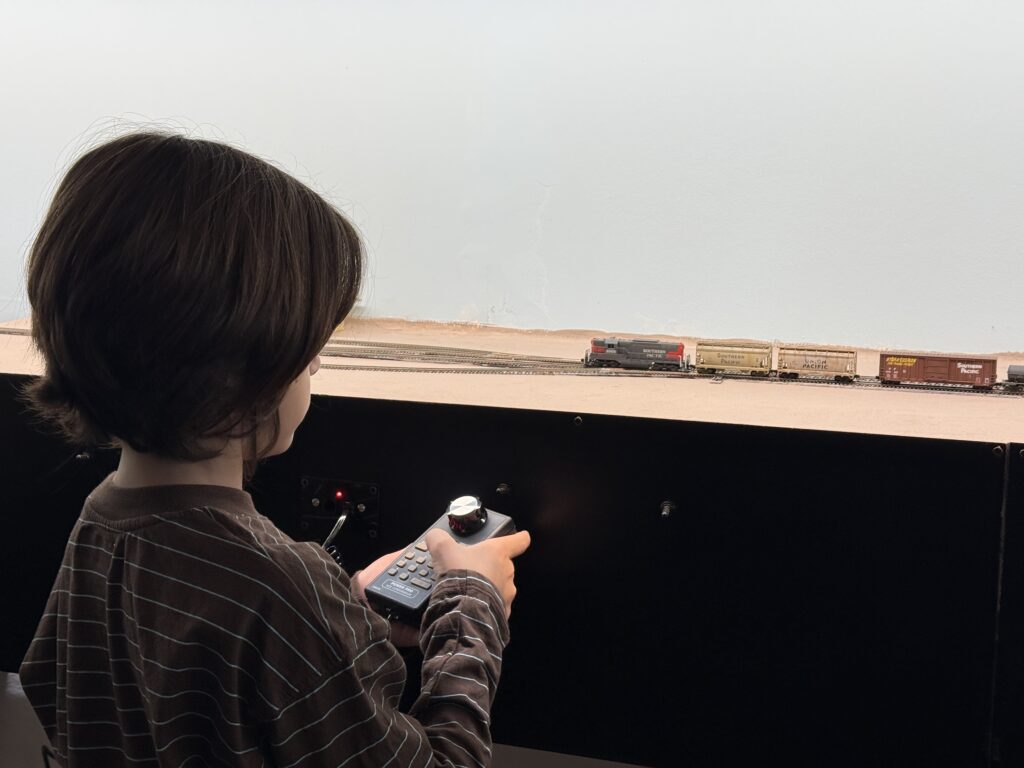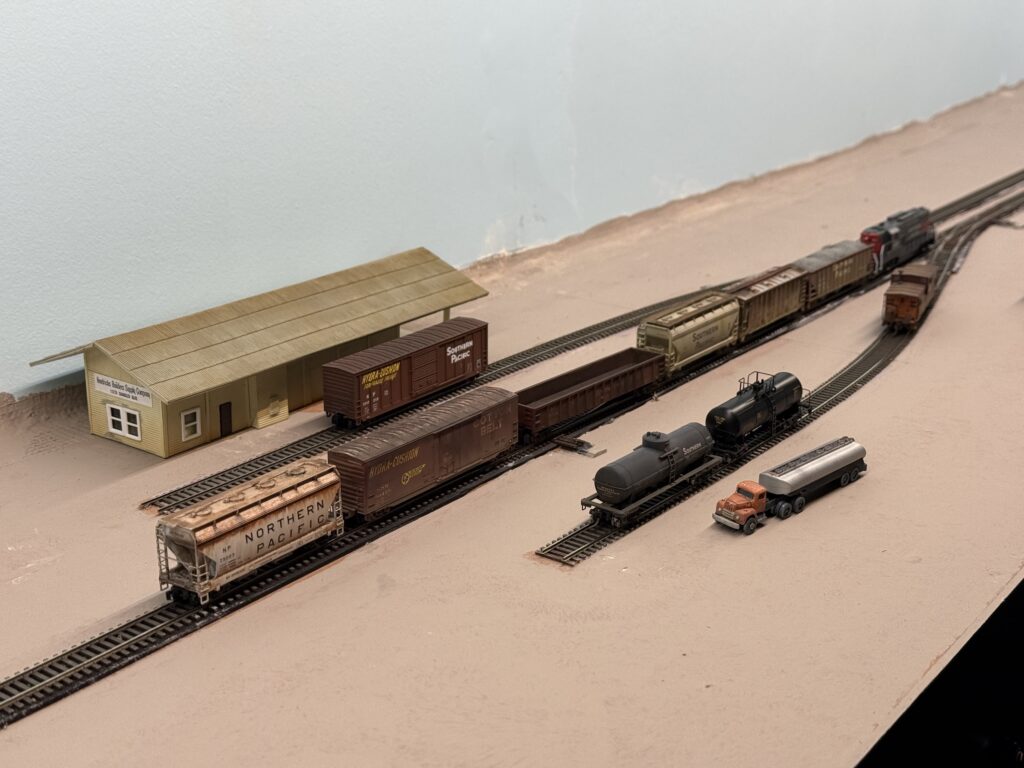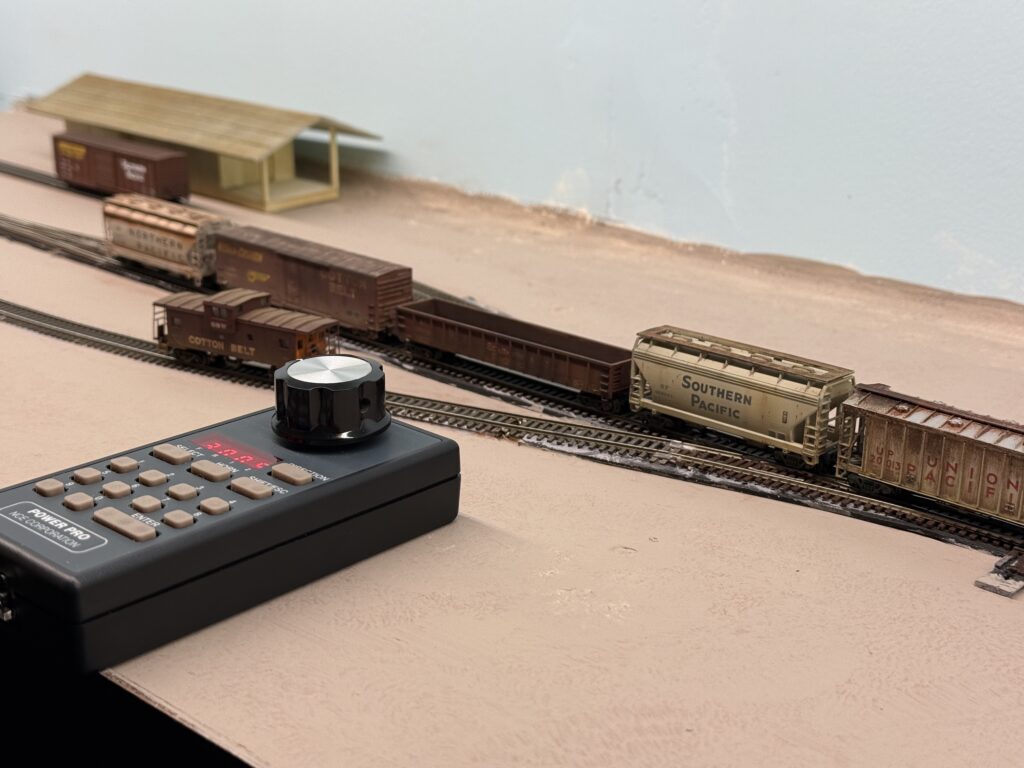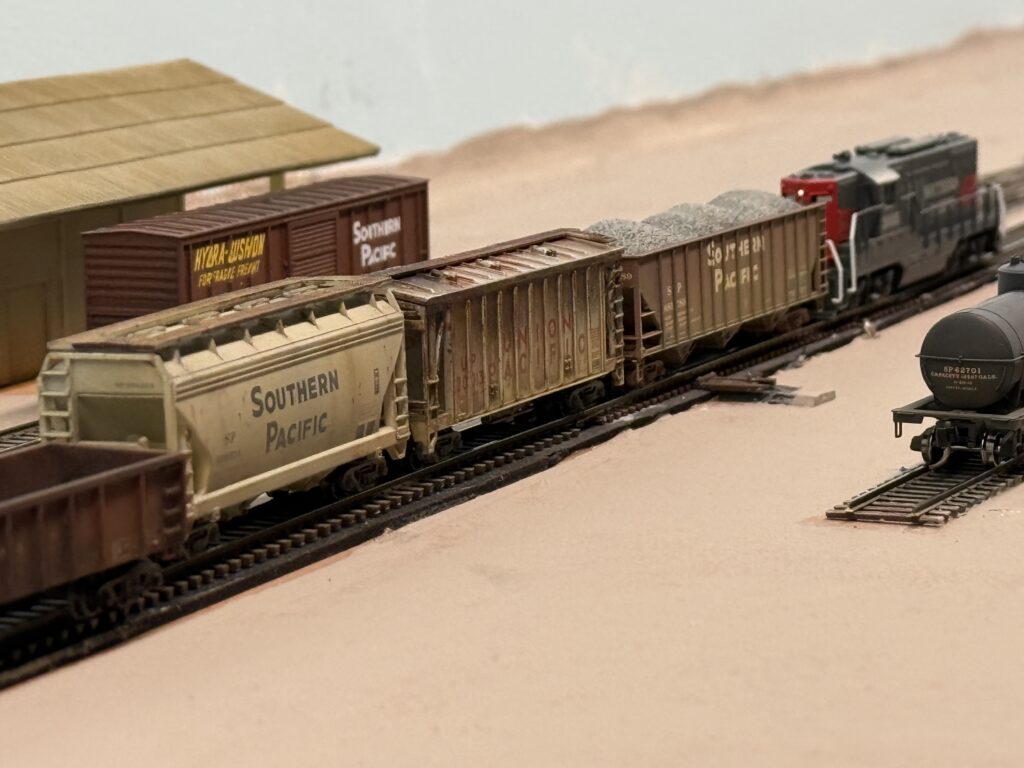Running a test operating session helps reveal whether the trackwork and car movements meet expectations.
It is always important to run a test operating session before painting and ballasting the track, since any minor or major issue can be addressed without damaging the scenery.

The first operating session was completed with the help of my seven-year-old son, who took the role of engineer. I printed a simple switchlist, and he performed all the switching under my guidance. We started from the staging yard, completed our setouts and pickups, and returned to staging in about one hour.
During the session, I discovered that my Atlas GP9 with an ESU sound decoder, purchased new in November 2024, had a serious gauge problem on the rear truck axles. I checked the wheels with two different tools: the official NMRA gauge and the Micro-Trains Line coupler gauge.
Even after correcting the axle gauge, the locomotive still derailed every time it passed through a crossover. I tested six other locomotives, and none of them had any issues. No matter how I fine-tuned the wheels, the GP9 kept derailing over the same turnouts.
I never had problems like this on my previous layout, which included about forty Atlas Code 55 turnouts. However, I must admit that the quality control of Atlas turnouts is not what it used to be twenty years ago.
I checked several against the NMRA gauge, and about eighty percent showed a narrow flangeway clearance. It is quite disappointing, especially that an Atlas locomotive struggles to run smoothly over Atlas track.
By the way, apart from a few hiccups with the GP9, the session once again proves that a layout with only seven turnouts can still be a lot of fun to operate.


